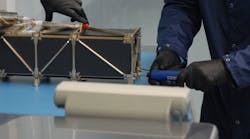Satellite systems depend on fast, cost-effective launches of spacecraft. In order to meet pressing needs for lower-cost, smaller satellite systems, Aerospace Corp. has developed its Rapid + Responsive + Reimagined (R3) CubeSat system as an experiment in low-earth-orbit (LEO) satellite technology that can provide reliable satellite services at a fraction of the cost of traditional space-based systems. The R3 CubeSat system was launched on Dec. 15, 2018 from Rocket Lab’s small Electron satellite launcher from its New Zealand launch site.
“Our Innovation Lab (iLab) supported the development of this new technology in half the time it takes to build larger systems,” said Dr. Randy Villahermosa, executive director of iLab. “R3 is two percent of the size of larger spacecraft and three percent of the cost of larger satellites. Our plan is to experiment with several off-board artificial intelligence (AI) technologies that will be critical to creating future space capabilities and building resilient architectures. For example, automated image processing and feature-flagging using AI.”
The R3 satellite is demonstrating the capabilities of a smaller satellite by using a multispectral imager to capture images from space and then transmitting those images to earth by means of 200-Mb/s laser communications downlink. This high-speed link is currently providing space-to-ground communications that is 100 times the rate than any other current CubeSat in orbit. “R3 is just one example of our innovation strategy to develop new capabilities in the lab that can be tested quickly on CubeSats to buy down risk in future operational systems,” said Villahermosa.

